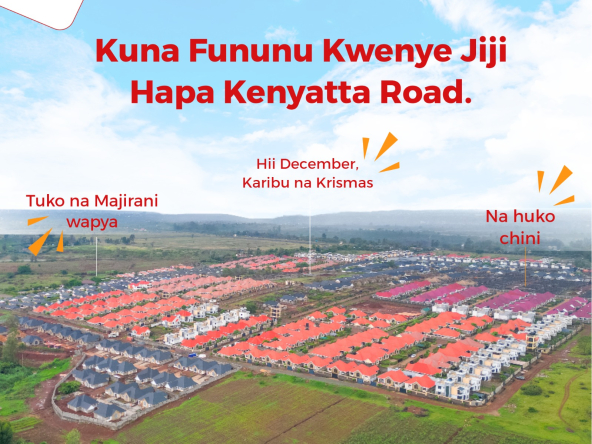The accessibility of easy loans in real estate is catalyzing a significant transformation in Kenya’s property market, particularly within Nairobi’s satellite towns. With financial institutions offering more accommodating mortgage and construction loan options, a growing number of Kenyans are investing in property developments beyond the city center.
Updated Statistical Insights: A Growing Trend
Recent data from the Central Bank of Kenya (CBK) indicates a continued increase in credit extended to the real estate sector. As of Q3 2024, gross loans advanced to the real estate sector rose slightly by 0.1% year-on-year to Kshs 507.6 billion, reflecting sustained demand for real estate funding in the country.
Satellite Towns: The New Frontier
The impact of accessible financing is evident in the rapid development of satellite towns. According to HassConsult’s Q2 2024 Land Price Index, land prices in Nairobi’s satellite towns have experienced significant growth:
- Juja: 20.1% increase to Sh21.7 million per acre
- Kiserian: 15.3% increase to Sh11.3 million per acre
- Syokimau: 15.2% increase to Sh34.9 million per acre
- Ruaka: 14.3% increase to Sh111 million per acre
- Ruiru: 14.1% increase to Sh32.9 million per acre
- Ongata Rongai: 14% increase to Sh26.7 million per acre
- Kitengela: 13.3% increase to Sh17.2 million per acre
- Limuru: 11.9% increase to Sh23.4 million per acre
- Mlolongo: 11.6% increase to Sh40.6 million per acre
- Kiambu: 10.7% increase to Sh48.7 million per acre
Read Also: Mortgages and Home Loans in Nairobi: Unlocking Access to Gated Community Living in Satellite Towns
These figures underscore the growing investor confidence in satellite towns, driven by improved infrastructure and the availability of easy loans.
Infrastructure and Economic Growth
The expansion of infrastructure, including roads and utilities, has enhanced the appeal of satellite towns. Improved connectivity through projects like the Nairobi Expressway and the Eastern Bypass has made areas such as Syokimau, Limuru, and Mlolongo more accessible, thereby attracting investors and homebuyers.
Moreover, the government’s Vision 2030 anticipates a significant increase in urban population, projecting 38.2 million people living in urban centers in the next two decades. This urbanization trend underscores the importance of developing satellite towns to accommodate the growing demand for housing.
Challenges and Considerations
Despite the positive trajectory, the real estate boom in satellite towns is not without challenges. The Nairobi Metropolitan Development Ministry faces hurdles in enforcing integrated spatial growth strategies due to fragmented jurisdiction among local authorities. This lack of a cohesive regulatory framework has led to uncoordinated development and infrastructure strain.
Additionally, the current real estate surge, predominantly driven by diaspora remittances and mortgage accessibility, has inadvertently marginalized low-income households. Government data indicates that nearly 48% of the housing demand comes from this demographic, highlighting the need for inclusive housing policies.
The infusion of easy loans in real estate has undeniably spurred growth in Nairobi’s satellite towns, offering new opportunities for investment and homeownership. However, to sustain this momentum and ensure equitable development, it is imperative to address regulatory challenges, infrastructure needs, and the housing requirements of all income groups. With strategic planning and inclusive policies, satellite towns can continue to thrive as integral components of Kenya’s urban landscape.
Read Also: Tenant Rights in Kenya: Legal Protections, Common Violations, and Remedies



